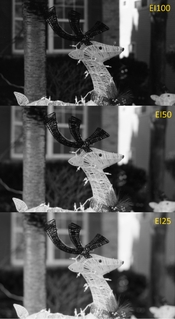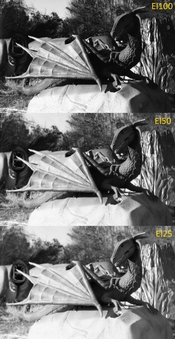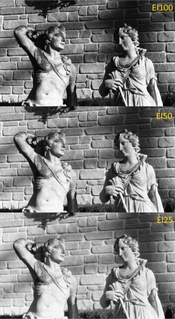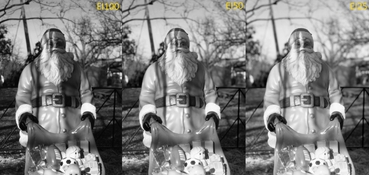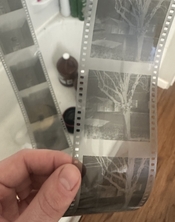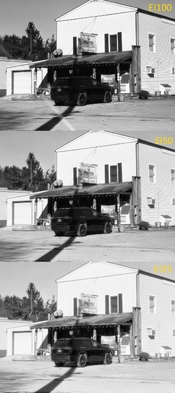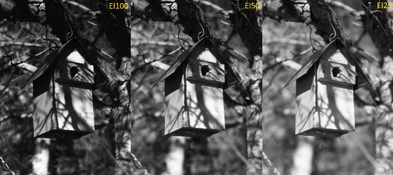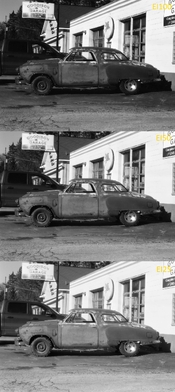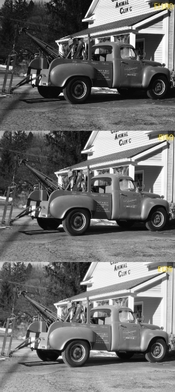Hunter_Compton
Member
I've acquired a large bulk roll of this film (9.5"x100') and after researching it online, I've found a lot of conflicting reports on how to expose it for pictorial use varying from recommended exposure indexes of 125 to 6. Part of this comes from the fact that this film is designed for aerial usage and has an effective aerial film speed (EAFS) of 200 which relies on developing to a very high contrast (gamma appx. 1.5). Part of it also comes from the wide variety of developers that I have seen used with this film.

What I have not seen are side by side comparisons of exposing at different exposure indexes and developing under identical circumstances for comparison. So I'm trying to provide some of that. The caveat is that this roll of film has an expiration date of 10/1998 so may have base fog levels which affect the testing, but since this film was discontinued in 2011, all of it probably has some base fog at this point. It did not seem especially fogged in my opinion.
So I tested this film under ordinary outdoor daylight conditions (bright sun, a few clouds) using my RB Graflex Series D at exposure indexes of 100, 50 and 25. The film was developed using HC-110 Dilution H at 68f for 10 minutes, which corresponds for the recommended time for this developer and dilution when used with ordinary Kodak Plus-X film, since a large proportion of people recommend using standard Plus-X times as a starting point.
The film was scanned on my Epson V500 using the standard Epson Scan software without manual adjustments being applied to attempt to give as uniform scans between each example as possible.
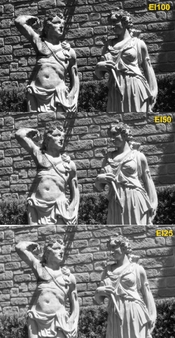
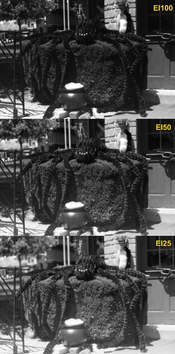
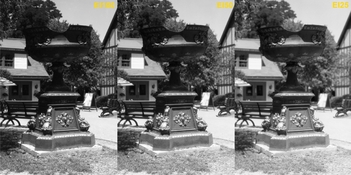
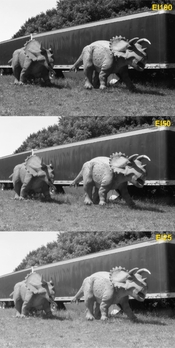
I then made contact prints of these negatives onto Ilford Multigrade RC paper at grade 2 filtration with exposure time adjusted to accommodate the difference in negative density. Prints were developed for 1 minute each in Kodak Polymax T 1:9 and then scanned the prints. I believe that a properly exposed negative should print well on grade 2 paper. I have no doubt that with filtration for more or less contrast would improve some of the prints, but the point was to show a comparison between prints so as many variables were kept uniform as possible.
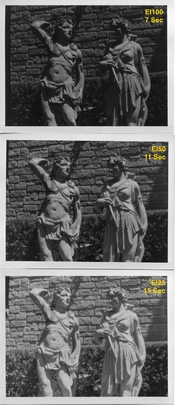
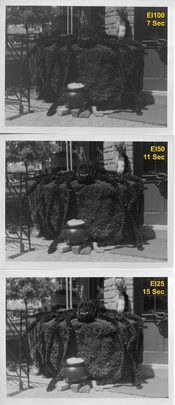
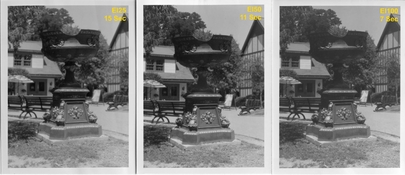
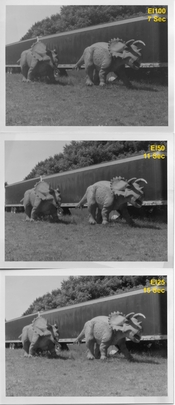
My impressions of this film are that it is inherently contrasty with low exposure latitude. In bright sun, it is easy to crush the shadows or blow the highlights if you are not careful. I won't say that it has no antihalation layer, but its ability to prevent halation is limited and you will see halation around light sources or reflections. Using this development method I think I prefer exposing it at an EI of 50-64 if I intend to scan it, but prefer exposing at an EI of 25-32 if I intend on making prints.
I think that this film could greatly benefit from a low contrast developer such as D-23, which is something that I would like to test in the future.
What I have not seen are side by side comparisons of exposing at different exposure indexes and developing under identical circumstances for comparison. So I'm trying to provide some of that. The caveat is that this roll of film has an expiration date of 10/1998 so may have base fog levels which affect the testing, but since this film was discontinued in 2011, all of it probably has some base fog at this point. It did not seem especially fogged in my opinion.
So I tested this film under ordinary outdoor daylight conditions (bright sun, a few clouds) using my RB Graflex Series D at exposure indexes of 100, 50 and 25. The film was developed using HC-110 Dilution H at 68f for 10 minutes, which corresponds for the recommended time for this developer and dilution when used with ordinary Kodak Plus-X film, since a large proportion of people recommend using standard Plus-X times as a starting point.
The film was scanned on my Epson V500 using the standard Epson Scan software without manual adjustments being applied to attempt to give as uniform scans between each example as possible.




I then made contact prints of these negatives onto Ilford Multigrade RC paper at grade 2 filtration with exposure time adjusted to accommodate the difference in negative density. Prints were developed for 1 minute each in Kodak Polymax T 1:9 and then scanned the prints. I believe that a properly exposed negative should print well on grade 2 paper. I have no doubt that with filtration for more or less contrast would improve some of the prints, but the point was to show a comparison between prints so as many variables were kept uniform as possible.




My impressions of this film are that it is inherently contrasty with low exposure latitude. In bright sun, it is easy to crush the shadows or blow the highlights if you are not careful. I won't say that it has no antihalation layer, but its ability to prevent halation is limited and you will see halation around light sources or reflections. Using this development method I think I prefer exposing it at an EI of 50-64 if I intend to scan it, but prefer exposing at an EI of 25-32 if I intend on making prints.
I think that this film could greatly benefit from a low contrast developer such as D-23, which is something that I would like to test in the future.
Last edited:









